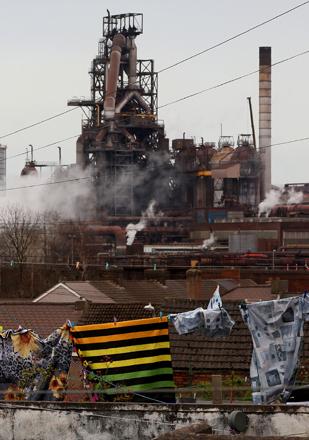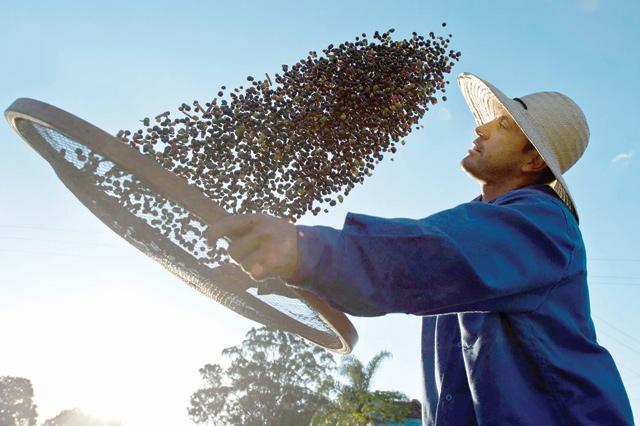You are here
China to reign supreme in world commodities in 2014 — report
By AFP - May 18,2014 - Last updated at May 18,2014
PARIS — Grains, metals, meat: these are just three of the commodities being sucked in by the voracious Chinese economy which is set to be the key driver on raw materials markets this year.
French commodity research specialist Cyclope in a report published last week argues that "in the coming months, global markets will feel even the slightest sneeze from China".
World commodity prices have surged in recent years, driven by rising demand from increasingly affluent shoppers in emerging markets and particularly China.
China has also amassed huge reserves of dollars and has the financial fire-power to buy and outbid, since many commodities are traded in dollars.
China overtook India to become the world's biggest gold-consuming nation in 2013 and the World Gold Council forecasts that its appetite could jump by about 20 per cent by 2017.
It is also close to overtaking the United States as the world's biggest oil importer, and has become a vast consumer of many agricultural commodities as more people can afford to eat meat and dairy products.
Its influence on global commodity markets has become even more important in the wake of the global economic crisis, which has hampered growth in the developed world.
China and wine
Even sales of top French wines are being driven by Chinese demand, said Philippe Chalmin, a professor at Paris Dauphine University, who led the Cyclope report.
But growth in the Chinese economy, the world's second-biggest after the United States discounting the ranking of the European Union, is decelerating as Beijing's leaders wean the country off investment as the key driver of expansion and shift the focus towards consumer spending.
The slowdown in China last year had a huge impact on metal markets in particular, sending prices lower.
On average, raw material prices fell by 5.0 per cent in 2013, the report indicated.
In 2014, Cyclope predicts that prices will fall even further, by an average of 4.0 per cent, despite support from an expected uptick in global growth.
Nonetheless, "the current slowdown and future activity should not cause major adjustments", reads the report. "The slow transformation of the growth model and the further development, instead, point to a higher Chinese demand for raw materials."
A giant appetite
China cemented its position as a key player in world cereal markets in 2013 when it resumed international wheat imports for the first time for 10 years.
China has also become the world's second-biggest buyer of world beef products, with its imports quadrupling in recent years owing to concerns about local products after numerous health scares.
If this appetite for foreign beef continues, "the global market for beef will turned upside down", the report says.
Similarly, several scandals involving tainted milk and a growing appetite for Western diets have also turned China into a "key to world dairy markets", said Chalmin.
China's influence can be even harder to gauge because its politics are so opaque, Chalmin added.
In recent months several agricultural commodities of which China is a major importer — soya, wheat and corn — have felt the effects of Beijing's policy changes.
US corn exports to China, the fastest-growing US market, have dried up rapidly since the Politburo toughened its stance on genetically-modified grain, while soya prices have been hurt by worries about possible defaults by Chinese buyers.
Coffee and cocoa are the only agricultural commodities which have been little affected by China's rise — although consumption of both of these is growing.
However, Chinese demand is not the only factor driving food prices in the year ahead.
Agricultural commodity prices are also likely to be affected by the return of the El Nino weather system this year.
The El Nino occurs when a huge mass of warm water builds in the western Pacific and eventually shifts to the eastern side of the ocean, and can cause widespread disruption.
The UN forecasts that the return of the weather pattern could constitute a "major menace" for crop output in the Pacific and Indian Ocean.
A question mark also hangs over the next grain harvest in the Black Sea region of Ukraine, a major grain exporter which is already facing a political crisis.
Biofuels and genetically modified technology will also be key drivers for agricultural prices, as will the withdrawal of major financial players commodity trading.
"Raw materials are the tip of all the tensions of the world," Chalmin indicated.
Related Articles
MANILA/LONDON — Steel producers in high-cost countries say their best hope for surviving the global glut is to develop higher value speciali
China has lost a dispute at the World Trade Organisation (WTO) over limits on rare earth and metals exports, handing Europe and the United States a victory over what they see as Beijing's unfair trade practices.
LONDON — Coffee prices surged this week to multiyear peaks, extending stellar gains this year after frost damaged crops in the world's bigge













